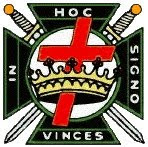

Nagorno-Karabakh is a landlocked Armenian region in southern caucuses. It has an area of 8223 km2 and it is mainly a mountainous region. In 2007 the population was around 138000 of whom 95% are Armenians with the remaining 5% of Kurds, Greeks and Assyrians.
The region is disputed between Armenia and Azerbaijan.
In 1920 Azerbaijan was proclaimed a soviet republic, shortly after, the newly proclaimed republic along with Russia started threatening Armenia in order to withdraw its troops from Nagorno-Karabakh. Later on, under Stalin rule, the region was annexed to Azerbaijan. During decades under soviet rule, the Armenians of Nagorno-Karabakh protested the discrimination and the persecussion they suffered.
In attempt to change the ethnic structure and the demographics of the region, the government of Azerbaijan tried all the means to inhibit the economic growth in the region as well as cultural discrimination (many institutes and schools were closed, the Armenians newspapers were forbidden…).
On the 13th of February 1988 protests erupted in Stepanakert the capital of Karabakh and a demand of reunification of Nagorno-Karabakh with Armenia was refused by the soviet authorities.
In response to the protests, the Azerbaijani Government conducted a series of pogroms in Sumgait, near Baku, against the Armenians between the 26th and 28th of February which led the Armenians in Karabach to organize a resistance against the ethnic cleansing of Armenian people in Azerbaijan.
Between 1989 and 1992 the Azerbaijanis seiged the region of Nagorno-Karabakh, invaded the Armenian villages deporting 24 villages and killing hundreds of Armenians.
September 1991, Nagorno-Karabakh declared itself an independent republic. The struggle over Nagorno-Karabakh escalated after both Armenia and Azerbaijan attained independence from the Soviet Union in 1991. As many as one thousand Afghan mujahedeen participated in the fighting on Azerbaijan's side. There were also fighters from Chechnya fighting on the side of Azerbaijan.
By the end of 1993, the conflict had caused thousands of casualties and created hundreds of thousands of refugees on both sides. By May 1994, the Armenians were in control of 14% of the territory of Azerbaijan. At that stage, the Azerbaijani government for the first time during the conflict recognized Nagorno-Karabakh as a third party in the war, and started direct negotiations with the Karabakh authorities. As a result, an unofficial cease fire was reached on May 12, 1994 through Russian negotiation.
In 1999 the Azerbaijanis violated the 5 years cease fire. Since then negotiations were resumed. As of August, 2008, the United States, France, and Russia (the co-chairs of the OSCE Minsk Group) are mediating efforts to negotiate a full settlement of the conflict, proposing a referendum to determine the final status of the area.
Nowadays Nagorno-Karabakh is highly dependent on economic and political support of Armenia as well as the lobbying and the raise funds of the Armenian Diaspora in the world.


No comments:
Post a Comment